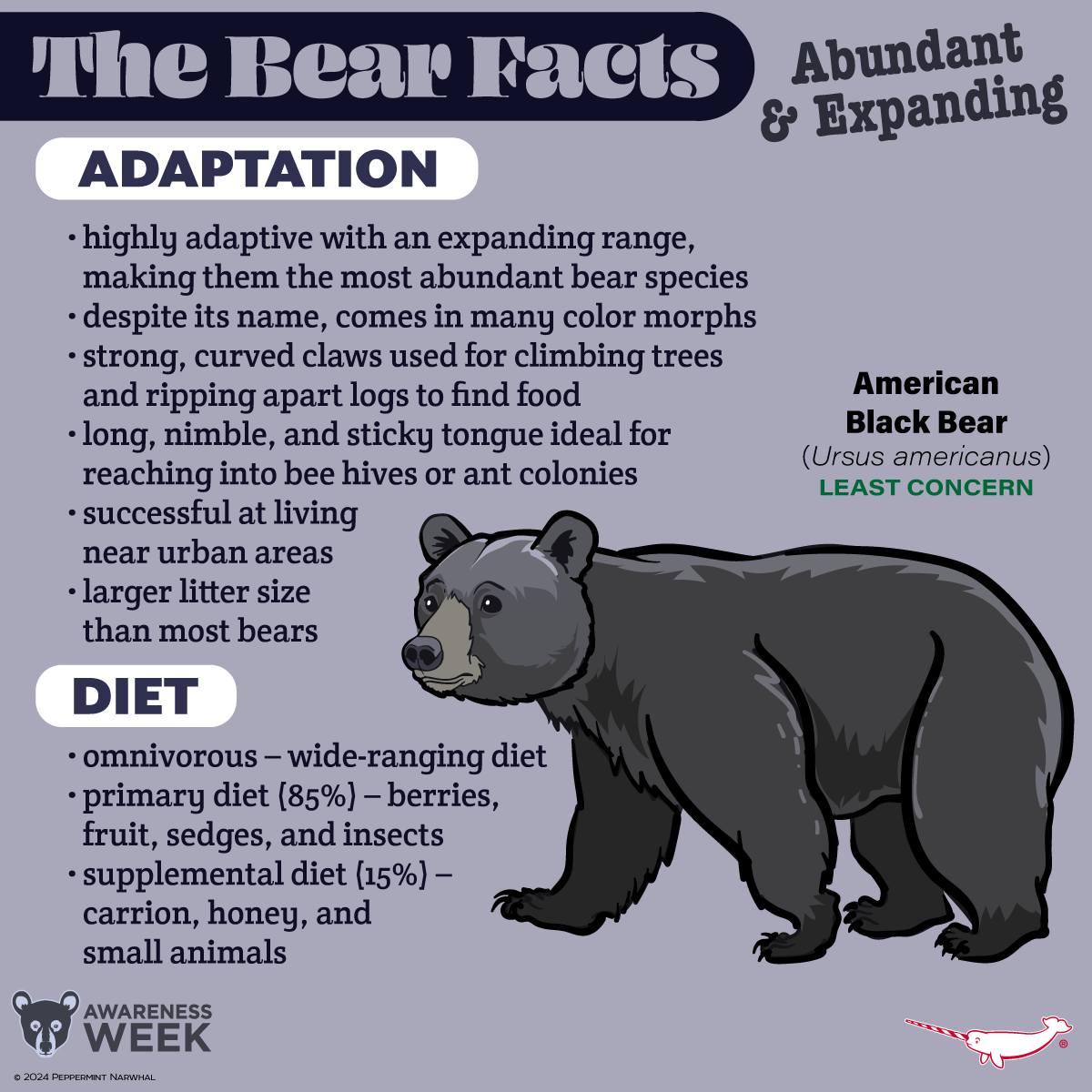- Current status and conservation classification of the American Black Bear (Ursus americanus)
- Habitat preferences and geographical distribution of the American Black Bear
- Population trends and factors contributing to the expansion of American Black Bear populations
- The Role of the American Black Bear in Ecosystems and human-bear Interactions
- Conservation efforts and how the public can support American Black Bear populations
The American Black Bear (Ursus americanus) holds the distinction of being North America’s most widespread bear species, residing in a diverse array of forested habitats across the continent. Recognized by the International Union for Conservation of Nature (IUCN) as Least Concern, this species showcases resilience and adaptability, managing to expand its presence even amidst growing human populations. Nevertheless, its successful conservation story is intricately linked to ongoing efforts to understand, protect, and coexist with this remarkable mammal.
Habitat preferences and the geographical distribution of the American Black Bear are vast, spanning from the northern forests of Canada and Alaska down through many U.S. states into Mexico. This bear favors environments that provide ample food sources, such as nuts, berries, insects, and occasionally small mammals, coupled with dense cover for hiding and denning. Their adaptability to different forest types, from the East Coast’s deciduous forests to the West’s mountainous regions and the dense brush of the Southeast, has been a key factor in their widespread presence.
Looking at population trends, American Black Bear numbers have been on an upward trajectory in many areas, contradicting the global trend of wildlife decline. Estimates suggest over 800,000 individuals across their range, a testament to successful wildlife management and conservation policies. This increase is attributed to habitat protection measures, regulated hunting to prevent overpopulation, and a greater public awareness of living in harmony with bears, thus reducing human-bear conflicts.
The American Black Bear plays a pivotal role in its ecosystems, acting as a keystone species in many of its habitats. Their feeding habits help control insect populations and disperse seeds, aiding in forest regeneration. Furthermore, their role as a prey species for larger predators such as cougars and wolves adds to the complexity and balance of forest ecosystems. However, expanding their populations has led to increased interactions with humans, necessitating ongoing education and community engagement programs to mitigate conflict and promote coexistence.
Conservation efforts for the American Black Bear have been multifaceted. Wildlife agencies and non-profit organizations have been pivotal in implementing programs that range from habitat preservation and restoration to public education campaigns on bear safety and the importance of not feeding wildlife. Additionally, scientific research is critical in guiding management practices, including monitoring bear populations, studying bear behavior, and tracking their health and genetics.
Supporting American Black Bear populations requires a collective effort from the public, conservationists, and policymakers. Individuals can contribute by adhering to bear-wise practices, such as securing food sources and garbage, to prevent bears from becoming habituated to human presence. Supporting habitat conservation initiatives and policies that protect bear populations and their habitats also plays a critical role. Furthermore, engaging in or supporting scientific research and education initiatives helps to foster a deeper understanding and appreciation of American Black Bears and their place in North America’s wildlife heritage.
The story of the American Black Bear is one of adaptability, resilience, and the importance of conservation. It is a compelling example of how understanding and respecting our wildlife can lead to thriving populations, even in the face of expanding human development. As we celebrate Bear Awareness Week, let’s acknowledge the success of the American Black Bear and commit to continuing efforts that ensure these majestic creatures remain a prominent part of the landscape for generations to come.
*****
Source Description
The Bear Facts – Abundant & Expanding
American Black Bear (Ursus americanus) – Least Concern
Happy Bear Awareness Week!
Stay connected with us all this week as we spotlight all eight bear species and share some fun and informative facts about each.
NEW Series 6
Pledge Now: endangeredpins.com
Campaign ends June 3, 2024.
Bear Merch:
https://www.peppermintnarwhal.com/s/search?q=bear
& for More cool animal merchandise
Shop www.peppermintnarwhal.com
International Shoppers visit our store on Etsy:
https://www.etsy.com/shop/PeppermintNarwhal


